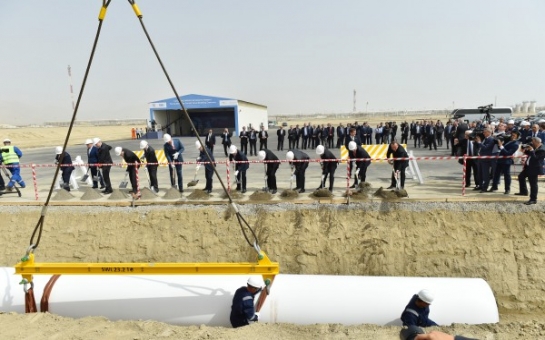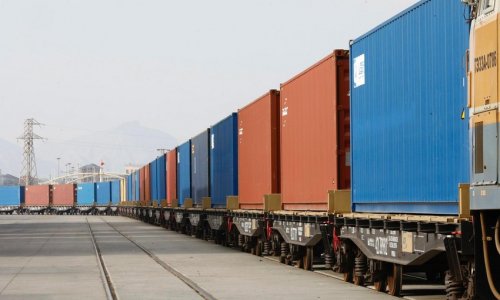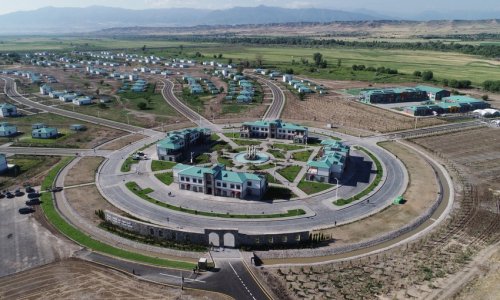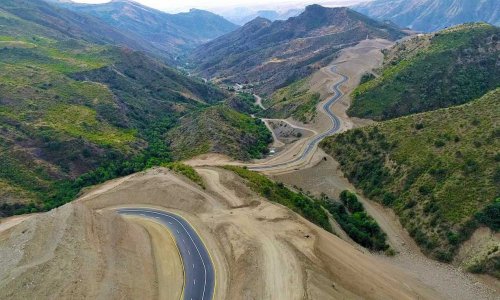(Economist Intelligence Unit) -- On September 20, a ceremony took place in Baku, the capital, to mark the start of work on the Southern Gas Corridor, a chain of pipelines that will carry gas from Shah Deniz II, an offshore gasfield project in the Caspian Sea, to Turkey and southern Europe.
The launch of Shah Deniz II, and the gas infrastructure to Turkey and Europe, will allow Azerbaijan to more than triple its gas exports by 2020. This will help to arrest the projected decline in Azerbaijan's trade surplus over the next four years, which is linked to falling oil output and prices. The project will boost the hydrocarbons sector's long-term prospects and help Europe to diversify its energy supplies.
The project includes constructing the Trans-Anatolian Pipeline (TANAP), which will run through Georgia to the Turkish-Greek border, and the connecting Trans-Adriatic Pipeline (TAP), which will extend to Italy via Albania. Turkey is to receive 6bn cu metres of gas a year, starting from late 2018, while 10bn cu metres will be delivered in total to Italy, Greece and Albania from 2019.
According to the State Oil Company of the Azerbaijan Republic (SOCAR), total capacity can be expanded to 23bn cu metres by 2023, and to 31bn cu metres by 2026.
With oil output forecast to decline in 2014-18, Azerbaijan is looking to exploit its more modest gas reserves, while continuing exploration work to find viable new oil and gasfields. Although Shah Deniz II will help to diversify Europe's energy supplies away from reliance on Russia, the volumes involved are relatively modest. This, together with higher than originally estimated costs and the lacklustre forecast for growth in gas demand in Italy, has cast doubt on the project's profitability.
These factors may have partly explained the decision of Statoil (Norway) to reduce its stake in the project, as well as that of Total (France) to withdraw since the final investment decision in December 2013.
Export boost
Azerbaijan produced 17.9bn cu metres of gas in 2013, up from 17.2bn cu metres in 2012, principally from the Shah Deniz I field. Some 7.3bn cu metres of gas (just over 40% of total production) was exported in 2013, with the majority of this sold to Turkey (estimated at 6.5bn cu metres). The total value of gas exports in 2013 was US$1.8bn, or 5.6% of merchandise exports.
We expect gas production to rise by 2-3% a year until 2018. The launch of Shah Deniz II in 2019 will lead to a 30% increase in total gas production in that year, and a 38% rise in 2020. By the end of 2020 annual gas output is projected to exceed 36bn cu metres. As a result, total exports will rise by over 70% year on year in both 2019 and 2020, to over 24bn cu metres.
The value of future gas exports and the impact on the trade balance is uncertain, as the price of gas supplied to Turkey and Europe is not known. Our tentative forecast is that gas sales will rise to US$3.8bn in 2019, equivalent to around 13% of total merchandise exports in that year. As a result, total exports are expected to grow by 3-4% in nominal terms in 2019. The launch of Shah Deniz II will therefore reverse the decline in Azerbaijan's exports as a result of falling oil production and oil prices. We expect nominal export earnings to contract by just over 3% a year in 2014-18.
Bakudaily.Az











